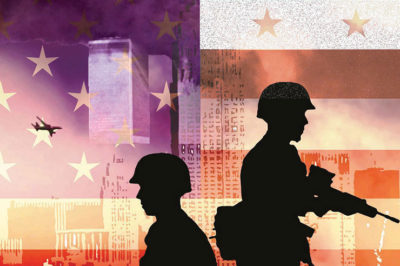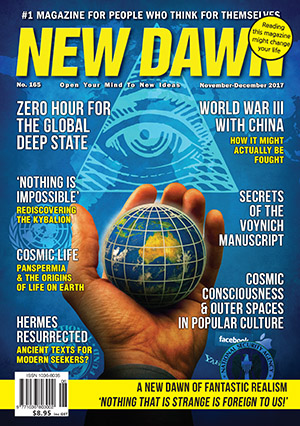From New Dawn 165 (Nov-Dec 2017)
In the third and final part of this series, MARC STAR looks at how the war on Iraq in 2003 was based on a deliberate deception. This disastrous war opened the gates of hell in the Middle East – with the killing and destruction continuing to this very day (read Part One here & Part Two here).
By late 2002, the White House and a complicit American press were beating the same war drums, characterising Saddam Hussein’s regime as non-compliant with UN Security Council resolutions via the concealment of an active weapons of mass destruction (WMD) program – most notably a nuclear development capability.
Amidst this din of propaganda, dissenting voices were generally drowned out – save for one, former UN weapons inspector Scott Ritter, who was often seen on US national news programs. When interviewed for a September 2002 book entitled War on Iraq, Ritter refuted the entire case for war – with authority.
“Since 1998 Iraq has been fundamentally disarmed,” Mr Ritter said. “90-95% of Iraq’s weapons of mass destruction capability has been verifiably eliminated… We have to remember that this missing 5-10% doesn’t necessarily constitute a threat. It doesn’t even constitute a weapons program… There’s no evidence Iraq retains this material… When I left Iraq in 1998, when the UN inspection program ended, the infrastructure and facilities had been 100% eliminated. There’s no debate about that.”73
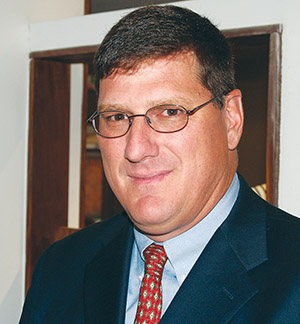
The only ongoing point of non-compliance Mr Ritter would later relate in a pair of books released after the initiation of the war on Iraq (Iraq Confidential and Frontier Justice), was that Iraq failed to reveal its concealment program – the methods by which it sought to protect its state secrets from UN weapons inspectors, methods that led directly to the presidential security apparatus of Saddam Hussein. So long as the Iraqi regime resisted UNSCOM inspections into the presidential security system – what may have been Iraq’s last bastion of sovereignty against what it rightly saw as cover for a CIA spying operation – inspectors could not declare Iraq disarmed, thus placing it in the crosshairs of UN non-compliance. As it would turn out, compliance was a bigger threat to those fuelling the US agenda than non-compliance.
“Inspections could expose the truth,” Mr Ritter noted. “And truth was the enemy.”74 Truth was, Iraq had been disarmed, and a disarmed Iraq provided no justification for invasion.
In order for the Bush administration to sell the war, it had to fabricate a lie. A big one. In the shape of a mushroom cloud.
The war on Iraq was largely sold on the fear generated by the Niger documents, a set of forgeries that alleged Iraq had attempted to purchase uranium from mines in Niger. The source of the documents – delivered to the CIA and to Britain’s MI6 – was Italy’s intelligence agency, SISMI, which used a cash-strapped freelance Italian spy, Rocco Martino, to pass the forgeries and take the fall. In a series of articles exposing the scandal, la Repubblica described Mr Martino as “a failed policeman. A dishonest snitch… a scoundrel.”75 Mr Martino, however, described himself as a pawn.
“It’s true,” he ultimately confessed. “I had a hand in the dissemination of those documents (Niger uranium), but I was deceived. Behind this story there are, together, Americans and Italians. It was a disinformation operation.”76 It would ultimately become part of a much larger agenda: “…the active deception of the United States Congress, the international community, and the American people,”77 wrote Ambassador Joe Wilson.
In February 2002, the CIA asked Ambassador Wilson to travel to Niger to investigate the uranium charges – charges that the CIA found dubious. During his trip, he found nothing to substantiate the claims. He wasn’t the only one. The American ambassador to Niger, as well as Marine General Carlton Fulford, the deputy commander of US Armed Forces Europe, each met with Niger’s president and concluded that due to the controls in place, the uranium deal could not possibly have happened. Ambassador Wilson concluded the same thing.
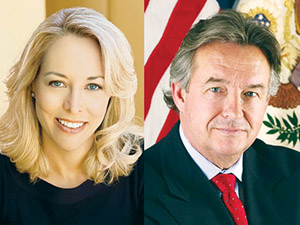
While the matter died a slow death in the American intelligence community, President Bush’s National Security Adviser, Dr Condoleezza Rice, on 8 September 2002, set the stage for its return during a CNN interview in which she said: “We know that [Saddam] has the infrastructure… [and] there will always be some uncertainty about how quickly he can acquire nuclear weapons. But we don’t want the smoking gun to be a mushroom cloud.”78 Two weeks later, the British government resuscitated the corpse in a white paper that stated, “there is intelligence that Iraq has sought the supply of significant quantities of uranium from Africa.”79
Although the charge had been discredited by Ambassador Wilson, General Fulford, the CIA and the ambassador to Niger, this Frankenstein accusation became the cornerstone in the US rebuttal to Iraq’s last ditch effort to fully declare the history of its WMD program. A 12,000 page disclosure submitted in December 2002, the final attempt by Iraq to publicly demonstrate compliance and avoid war. The US State Department, in reply to Iraq’s disclosure, asked, “Why is the Iraqi regime hiding their Niger procurement?”80 It was a question that Franz Kafka may have appreciated.
January 2003 was pivotal for marketing the Iraq war to the world. That month Australian Prime Minister John Howard met with his US and UK counterparts in Washington to discuss “post-invasion plans, including issues of security, humanitarian issues, reconstruction, political leadership, economic matters and the oil industry.”81 A week later, President Bush sold it to the American people in his State of the Union address, claiming that, “The British government has learned that Saddam Hussein recently sought significant quantities of uranium from Africa.”82
According to ex-CIA agent Paul Pillar: “The White House attributed the charge to the British because the CIA wouldn’t vouch for it.”83 In fact, Secretary of State Colin Powell, during his infamous address to the UN Security Council the following month, avoided citing the uranium claims and instead relied on a cache of aluminium tubes which had been intercepted in 2001 on their way to Iraq. These tubes would cause Secretary Powell to conclude, “there is no doubt in my mind, these elicit procurement efforts show that Saddam Hussein is very much focused on putting in place the key missing piece for his nuclear weapons program.”84
The tubes, however, were for conventional rockets.85 International Atomic Energy Agency (IAEA) Director General Mohamed el-Baradei concluded as such and confirmed that the Niger documents were, in fact, forgeries when he addressed the UN Security Council on 7 March 2003.
That day the United Nations made this point crystal clear in its press release:
“The Director-General of the IAEA, Mr ElBaradei, reported that, after three months of intrusive inspections, the Agency had found no evidence or plausible indication of the revival of a nuclear weapons programme in Iraq. There was also no indication that Iraq had attempted to import uranium since 1990 or that it had attempted to import aluminium tubes for use in centrifuge enrichment.”86
The American media failed to bring the UN’s news to a volume that could compete with the national debate over mushroom clouds. The White House had made its case and presented war as the only solution. Twelve days later, the United States invaded Iraq.
But there was, in fact, another option.
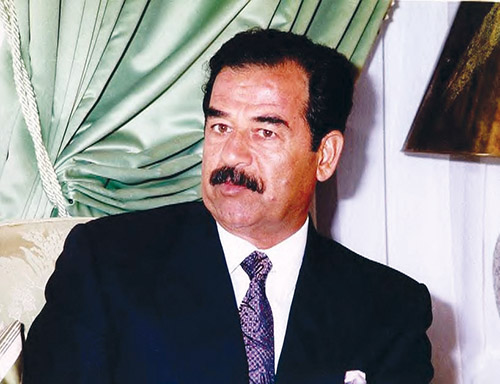
Peace Deal
In October 2002, when Hans Blix, the head of the United Nations Monitoring, Verification and Inspection Commission (UNMOVIC) and Mohamed el-Baradei, Director General of the International Atomic Energy Agency (IAEA), met with Amer al-Saadi, Saddam’s liaison with the UN weapons inspectors, the Iraqis were ready to comply, if only to avoid a full-scale invasion. During the meeting, Iraq agreed to once again cooperate with UN weapons inspectors, and as a result, inspections resumed that November.
As war approached, Saddam Hussein’s regime was cooperating with UN inspections, Mr Blix later told CNN correspondent Christiane Amanpour.87 In reply to Iraq’s cooperation, a White House official told CNN, “We’re not surprised. Obviously the Iraqis want to delay and deceive.”88
But the White House did not have any open communication channels with Iraqi diplomats. White House policy was based on hunches and gut feelings absent of any face-to-face dialogue. Susan Lindauer, however, had been negotiating with Iraqi diplomats, on behalf of the CIA, since November 2000, and what she accomplished had the power to pull the rug right out from underneath Bush’s war footing.
Fortunately, she kept a fairly detailed record of her progress via multiple correspondences to her second cousin, Andy Card, Bush’s chief of staff, the man who, on 11 September 2001, in front of a class of second grade students, whispered in the President’s ear, “America is under attack.” Ms Lindauer’s letters are dated from 1 March 2001 and continue to 6 January 2003. They detail an intriguing story that begins with Iraq’s desire to peacefully end its conflict with the United States and continues towards desperation as the American invasion drew imminent.
Ms Lindauer’s negotiations began with Dr Saeed Hasan, Iraq’s Ambassador to the United Nations. “I emphasised that the return of weapons inspectors would be a critical precondition to ending the conflict,” Ms Lindauer wrote in the first of her letters. “Dr Hasan confirmed that Iraq could complete negotiations within three to four weeks, so great was the government’s desire for a comprehensive resolution to the troubles.”89 The Bush administration was just settling into the White House at this point, but wasted no time to exercise aggression. An American and UK bombing campaign against Iraq on 16 February 2001 complicated Ms Lindauer’s efforts.
Nevertheless, “Iraq is ready for direct dialogue with no conditions,” Dr Hasan told Ms Lindauer. “Once the United States conducts a thorough review of its regional policy, we are ready for a mature discussion that will achieve a comprehensive solution.”90
By July 2001, Ms Lindauer was discussing Iraqi oil concessions for American petroleum companies. But what she really needed was “White House support.”91
After 11 September, everything changed. Ms Lindauer’s 24 September letter to Mr Card was sent with “an urgent prayer for peace”92 between the US and Iraq. Whereas, previously, Iraqi diplomats had insisted on meeting with high-level representatives from the White House or State Department, the Iraqis put on paper their willingness to meet “any American official in a covert or incovert manner to discuss the common issue.”93 By December, the Iraqis upped the ante. In addition to allowing the weapons inspectors to return, Iraq offered its cooperation on terrorism investigations. By March 2002, Baghdad offered concessions to American corporations to help rebuild Iraq, which was in dire need of infrastructure after twelve years of sanctions and bombings. Additionally, “Baghdad offered to buy one million American manufactured automobiles every year for 10 years.”94
Nevertheless, by January 2003 the invasion of Iraq seemed all but inevitable. Andy Card had not responded to a single one of her missives during the two years she delivered them. She made one final attempt to make contact with the Bush administration, delivering a letter to Colin Powell on 27 January 2003, one week before his presentation at the UN.
“Mr Secretary, there’s a great deal that can be done… if you would allow me, I will set this in motion. I would be more than content to make the appropriate introductions for a covert meeting, which could take place in Baghdad or Jordan. I could make sure you’ve got the right people in the room, and then I could step into the hallway, and get out of the way.”95
Ms Lindauer had the skeleton of bilateral negotiations on paper – a framework for peace. Concessions in hand. But there were no negotiations. And the weapons inspectors of UNMOVIC were ignored.
As Mr. Blix later concluded, “Had the inspections been allowed to continue, there would likely have been a very different situation in Iraq.”96
The Unravelling
While the first chink in the Bush administration’s shield of lies was exposed by former FBI agent Coleen Rowley, who revealed how close the FBI was to actually breaking open the 9/11 case in August 2001, the public was content to let the buck stop at FBI Director Robert Mueller.
By summer 2003, no WMDs had been found in Iraq. Fingers started pointing.
In June 2003, the US Senate Select Committee on Intelligence (SSCI) initiated the first phase of its investigation, ultimately to determine “the objectivity, reasonableness, independence, and accuracy” of the intelligence community’s judgments and “whether any influence was brought to bear on anyone to shape their analysis to support policy objectives.”97 In other words, did the White House pressure CIA to ensure that its intel matched the President’s script?
On 6 July 2003, the New York Times published an op-ed piece by Ambassador Joe Wilson that reverberated all the way to the White House and which, after the White House took its revenge, led to Vice President Dick Cheney’s chief of staff, “Scooter” Libby, taking the fall in a legal case that stopped far short of its potential.
In Ambassador Wilson’s article, titled “What I Didn’t Find in Africa,” he laid bare the truth from the first sentence: “Did the Bush administration manipulate intelligence about Saddam Hussein’s weapons programs to justify an invasion of Iraq?”98 Ambassador Wilson then told a story to which the general public had not yet been privy: the truth about his trip to Niger to confirm that the so-called Niger documents were utterly baseless – confirmation that the Bush administration knew that no substantive evidence existed to suggest Iraq had a nuclear program.
Like gangsters, Cheney and his posse went after Ambassador Wilson’s family – his wife, Valerie Plame – by outing her as a covert CIA officer.
“It seemed that the motive for the attacks on me was to discourage anyone else from coming forward who had a critical story to tell,” Ambassador Wilson later wrote. “The message to mid-career intelligence officers was clear: Should you decide to speak, we will come after you and your family.”99
The Fall Guy
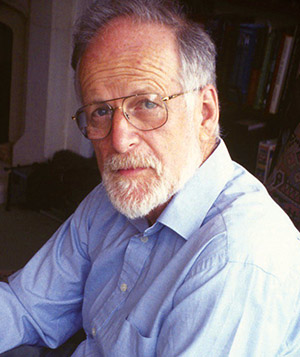
Within weeks of Ambassador Wilson’s op-ed piece, Welsh weapons inspector Dr David Kelly was found dead – a supposed suicide – in the woodlands of Oxfordshire, England. His wrists were cut, but paramedics reported a suspicious lack of blood at the scene.100 The knife he apparently used to slash his wrists had no fingerprints, nor did the blister pack of pills from which he allegedly overdosed.101 Although Ambassador Wilson and Dr Kelly aren’t directly linked, both cases involved governments lying their countries to war on bogus intelligence and leaking names after the truth was revealed. In both cases, the public narrative focused on who leaked instead of the far more important issue of bogus intelligence and how such shoddy intel could make its way into the speeches of President Bush and Prime Minister Tony Blair.
Days after Ambassador Wilson’s article, on 11 July, CIA Director George Tenet took the fall for the Niger debacle, issuing a press release that stated, “I am responsible for the approval process in my agency.”102
The White House officially had its scapegoat.
In fact, the Bush administration was in full propaganda mode, using legendary Watergate journalist Bob Woodward as its mouthpiece. Mr Woodward was given exclusive access to Bush and his circle at the end of 2003 for Plan of Attack, which details the debates within the White House about going to war. According to Mr Woodward, the President was hesitant about invading Iraq until swayed by an emotional outburst by the CIA chief.
“Bush turned to Tenet. ‘I’ve been told all this intelligence about having WMD and this is the best we’ve got?’… Tenet rose up, threw his arms in the air. ‘It’s a slam dunk case!’ the DCI said.”103
War of the Words
Within months of the Iraq invasion and Bush’s declaration of “Mission Accomplished,” things started getting messy. It was in August 2003 when America got the first real taste of what the Iraq invasion had wrought. The doors had been opened for the next stage of jihad. Abu Musab al-Zarqawi was a mujahideen-turned-street thug who ended up in a Jordanian prison during the late 1990s. Here he was indoctrinated in Wahhabist philosophy by Abu Muhammad al-Maqdisi, “a firebrand preacher known for penning screeds against Arab leaders.”104
Within a three-week period that August, Zarqawi’s network in Iraq executed three mass murder attacks that first served to isolate America and then initiated a quagmire into which the US would sink deeper and deeper. On 7 August, Zarqawi’s team set off a remote controlled bomb at the Jordanian embassy, killing 17. On 19 August, a suicide bomber hit the UN building, killing 22, the deadliest attack ever on a UN facility. The UN left the country. The NGOs were driven out and nations were discouraged from opening embassies. On 29 August, two car bombs exploded at a Shia mosque, Imam Ali, killing at least 85 people and igniting a sectarian war between Shia and Sunni.
The American “coalition” military was left alone in the midst of a civil war. Americans were dying in Iraq. The quagmire had begun and former Treasury Secretary Paul O’Neill, who retired in 2003, found that the price of loyalty to Bush was too high.
With Mr O’Neill, journalist Ron Suskind co-wrote a damning exposé of the Bush administration, published in February 2004, and for the first time the protective code of secrecy surrounding the criminals in the White House had been broken. Mr O’Neill was one of the principals within the administration from 2001 to 2003. When Price of Loyalty was released, so too was a first glimpse of the truth – a President who was disengaged from the threat of terrorism and overly obsessed with invading Iraq.
In February 2004, the Senate Select Committee on Intelligence (SSCI) broadened the scope of its inquiry beyond WMD to “the collection of intelligence on Iraq from the end of the Gulf War to the commencement of Operation Iraqi Freedom.”105 That is when Susan Lindauer decided to go public. She called the offices of Senators Trent Lott and John McCain. She wanted to go on record and testify.
“If Congress wanted to study Pre-War Intelligence,” Ms Lindauer would later write, “they had better talk to me.”106
On 11 March 2004, Ms Lindauer was arrested and charged with being an unregistered Iraqi agent.107
Two weeks later, former Terrorism Czar Richard Clarke released his tell-all, Against All Enemies, giving the public its first true glimpse into the White House’s crisis management of 9/11. The title alone, quoted from the United States Oath of Allegiance, stated what Mr Clarke would only imply – that the enemies of the United States are not only foreign, but also domestic.
The Incarceration and Vindication of Susan Lindauer
Spies are not encouraged to keep diaries, send memos or make carbon copies of reports. If they attract suspicion, ‘deniability’ is their only hope. But if a spy is cut off by his own country, deniability works like a hangman’s noose… it usually comes down to his word against his government’s.
– Lester Coleman & Donald Goddard, Trail of the Octopus108
Although Susan Lindauer was not a spy, she was an intelligence asset, working covertly for the CIA. In March 2004, she was arrested under the authority of the Patriot Act. As such, evidence against her was classified, her court appointed attorney was legally forbidden from sharing information with her, and if he did share this “secret evidence,” he would risk going to jail or being disbarred. It was, in effect, an attempt to prevent Ms Lindauer from building her case. But those who wanted to keep her quiet had more than indefinite detention in mind. In order to discredit her, the government intended to label her crazy.
Her arrest under the Patriot Act was only the first act of very dark drama. The second act began with a psychiatric evaluation.
“In the 1970s and 1980s due to the systematic political abuse of psychiatry in the Soviet Union… approximately one-third of the political prisoners were locked up in psychiatric hospitals.”109
Prior to the dissolution of the Soviet Union, those who opposed the regime were deemed mentally ill because “there was no other logical explanation why one would oppose the best sociopolitical system in the world.”110 This abuse became so rampant within the USSR that the Soviets were forced to withdraw from the World Psychiatric Association in 1983. Prior to that, however, in 1972, representatives of the USSR testified in front of the US Congress to bring this abuse to the world’s attention.
When the chief counsel for the Senate subcommittee introduced the topic of the hearing, “Abuse of Psychiatry for Political Repression in the Soviet Union,” he added, “and its implications for American security.”111 Truth is American security is compromised by an infrastructure that mimics exactly the types of abuses performed by the former Soviet Union – in particular, “special hospitals [that] are, in fact, prisons under military supervision and guards.”112
Ms Lindauer had intended to use a government defense at her trial, arguing that she “had authorization to deal with Iraq because of my Asset status.”113 But after she was compelled to submit to court ordered psychiatric evaluations, the psychiatrist recommended that she was “incompetent to stand trial” because she wouldn’t agree to an insanity defense, and because she insisted that her court appointed lawyer pursue witnesses, and because she believed she would prevail at trial.114
Subsequently she was transferred to Carswell Prison, a psychiatric prison inside of Carswell Air Force Base, where she would undergo an extended psychiatric evaluation – for the next year.
“Legally, once a person has been found psychotic or ‘not responsible’ by the Soviet authorities, compulsory treatment may be terminated only by a court of justice,” noted one of the Russian witnesses in 1972. “In practice, a favorable determination by the commission usually depends on the readiness of the patient to give the desired answers to certain questions; namely, recognition of the correctness of the patient’s confinement, admission that his views were wrong, and the promise to conform with the established ideology in the future.”115
Ms Lindauer refused to give the desired answers, refused to admit to the correctness of her confinement and refused to admit her views were wrong.
Then came the drugs.
“There are many cases of the forcible use in Soviet psychiatric hospitals of medical preparations harmful to the mental and physical health of the patient,” one Russian witness noted in 1972. Another added: “A deeply disquieting pattern, sometimes involving the punitive and potentially dangerous use of powerful drugs, seems to be emerging in the treatment of dissenters in Soviet mental institutions.”116
Within the military-run psychiatric prison of Carswell Air Force Base, the doctors proposed for Ms Lindauer a treatment of Benzodiazepeines, Prozac and Haldol. Common side effects of Haldol include hallucinations, seizures and memory loss.
Ms Lindauer described her experience with one of the Carswell inmates who had been subjected to Haldol treatments for a number of years: “She was docile like a baby. She could no longer speak in sentences. Or eat. Or dress. Or bathe. She slept 18 to 20 hours a day, and wet the bed frequently. All family ties had been lost, since she could not talk on the prison phones.”117
However, Ms Lindauer’s uncle, Thayer Lindauer, a corporate lawyer, took up her case and sidelined the court-appointed attorney during a yearlong fight to keep his niece from being forcibly drugged. Mr Lindauer later wrote in an affidavit:
“She has not exaggerated the threat of ‘indefinite’ detention that she faced, or the aggressive push to forcibly drug her with Haldol.
“It is absolutely correct that Carswell’s psychology staff, the US Attorney’s Office in New York, the FBI and the main Justice Department had direct knowledge that Susan had told the truth about her Asset work. I have spoken to witnesses myself, who told me that they assured the FBI and/or psychologists at Carswell that Susan was telling the truth. I must conclude the request for forcible drugging was politically motivated.”
Fortunately, Ms Lindauer prevailed in court and she retained her senses, so upon release she could tell her tale.
Nevertheless, the question remains: Why does the United States have an infrastructure in place that mimics exactly the type of infrastructure used by the Soviet Union to abuse psychiatry to repress political dissidents? Who copied whom? Or are both infrastructures a matter of similar origin?
In September 2006, Ms Lindauer was released from prison on bail after Judge Michael Mukasey ruled against forced medication. She would continue to fight the charges for another two-and-a-half years until the government disposed of the case in a filing that stated, “the continued prosecution of this case… would not be in the interests of justice.”118 But while her story of back channel communication with Iraq may seem contrary to the establishment narrative, Ms Lindauer’s peace negotiations were only one avenue the Iraqis sought to avert a looming war.
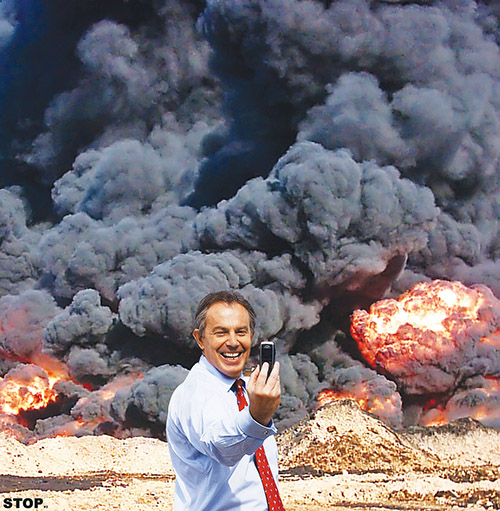
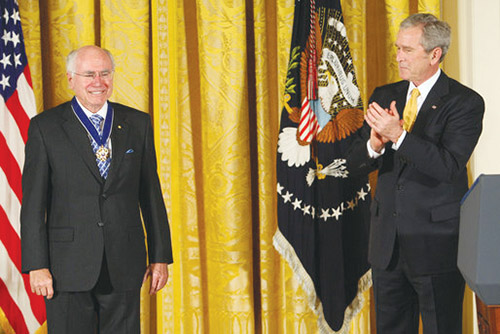
History Repeats Itself
The root of all the destruction in our world is itself the very thing that can wake us up.
– Paul Levy119
We are almost a generation removed from 9/11 and the Iraq War, but the pattern of corruption hasn’t much changed – only the intensity of violence broadcast around the world. The murder of 3,000 Americans on 11 September 2001 was savage. The digital age culture of beheadings initiated by Zarqawi relishes in that savagery. There’s also been the savagery of so-called ‘Islamic State’ – mass beheadings, immolations, crucifixions, firing line executions – recorded on video and distributed throughout the Internet. Such violence, however intense, pales in comparison to the mass murder visited on the civilian populations of the Middle East via Western initiated or sponsored warfare.
In the West, whistleblowers have become fugitives, with Edward Snowden exiled in Russia and Wikileaks’ Julian Assange exiled at the Ecuadorian embassy in London. Meanwhile the Western public is fed a steady diet of anti-Russian and anti-Iranian propaganda.
Though sidelined by analysts and academics, al Qaeda is alive and kicking with Muslim Brother al Zawahiri the man in charge. In Pakistan alone, there are reportedly 24,000 madrassas preaching Wahhabi-style jihad to two million boys.120
Israel, meanwhile, has become the most militarised nation in the world.121 Its defense sector is exporting technology and population control methodology, what Jeff Halper (head of the Israeli Committee Against House Demolitions) calls securitization, or the securocratic war against the people, lab tested on Palestinians in the occupied territories. The two-state solution is now all but dead. Meanwhile, Israel’s former enemy, Saddam Hussein’s Iraq, has basically been removed from the chessboard while its primary enemy, Iran, is encircled by Western forces and its other enemy, Syria, is in tatters.
The rise of so-called ‘Islamic State’ neatly paralleled aspects of the rise of the Taliban, with abandoned weapons caches supporting highly mobilised infantries zipping through the countryside in waves of Toyota trucks, promising stability to populations racked by civil war and corrupt administrations – along with plenty of outside funding to back up their efforts. Not surprisingly, a Hillary Clinton email released by Wikileaks named Saudi Arabia as a primary funder of ISIL.122 Closer to the truth is the following statement by a former veteran jihadist whose testimony was recently published by Oxford University Press:
“In his description of the Islamic State in Iraq and other such ‘post-al-Qaeda’ groups at the time, he said that ‘the support infrastructure provided by Gulf financiers has been the elephant in the room… funded and directed by the elite for their own purposes… Jihad is no longer an activity carried out by the [whole Muslim world]; it is jihad led by the rich’.”123
It is a jihad led by the rich and used as a tool to destabilise regimes that are non-compliant with the global corporatocracy. And when we put it all together, that is the point – the looming global elite takeover. It’s not ultimately about oil, war profits, Hanbali sharia or any of the singular narrative threads within this ego-driven ball of yarn. Rather, it is the closing in of a global corporate takeover. The same global takeover that Bill Cooper – and more recently David Icke – warned us about.
Humanity on planet Earth has been corrupted by an ordering principle of criminality that quietly self-organises behind the scenes in a web of common interests.
Does it completely self-organise? Or, like intersecting ripples on the surface of the water, do the various strands of the web merge as the result of impulses originating from sources unknown; moments of inspiration, as Mr Brzezinski would say, to knowingly increase the probability that certain things will occur, perhaps many years in the future?
As of this writing, the so-called ‘Islamic State’ is on its last leg, entrenched in the dwindling territory of its former ‘capital’, Raqqa, in Syria, where it is currently surrounded and losing territory by the day. “The caliphate’s short, brutal life is drawing to a close,” The Economist reported.124
If history is any guide, however, the Islamist infrastructure will produce a new wave of jihad. The jihadists are reportedly fleeing to the northwestern Syrian countryside and regrouping for the next period of jihadi gestation.125 With increasing American involvement in Syria, global jihad is preparing for a fresh new call. Just like the Iraq war saved a dying al Qaeda, American engagement in Syria will likely save a dying ISIL.
Footnotes
73. Scott Ritter, War on Iraq, Context Books, 2002, 28-31
74. Ritter, Frontier Justice, 150
75. Carlo Bonini, Giuseppe D’Avanzo, “Double Agents and Amateur Italians of Nigergate”, la Repubblica, 24 October 2005, www.repubblica.it/2005/j/sezioni/esteri/iraq69/sismicia/sismicia.html
76. Ibid.
77. Wilson, 424
78. Wolf Blitzer, “Search for the ‘Smoking Gun’,” CNN, 10 January 2003, www.cnn.com/2003/US/01/10/wbr.smoking.gun/
79. United States Senate Select Committee on Intelligence, Report on the U.S. Intelligence Community’s Prewar Intelligence Assessments on Iraq, 9 July 2004, 50
80. U.S. Department of State, “Illustrative Examples of Omissions From the Iraqi Declaration to the United Nations Security Council,” 19 December 2002, 2001-2009.state.gov/r/pa/prs/ps/2002/16118.htm
81. James O’Neill, “Lessons from the Iraq War: a reappraisal,” 7 January 2017, johnmenadue.com/?p=8963
82. George Bush, “State of the Union,” 28 January 2003, george
wbush-whitehouse.archives.gov/news/releases/2003/01/20030128-19.html
83. “Niger Uranium Rumors Wouldn’t Die,” Los Angeles Times, 17
February 2006
84. Colin Powell, “Remarks to the United Nations Security Council,”
5 February 2003, 2001-2009.state.gov/secretary/former/powell/
remarks/2003/17300.htm
85. The Commission on the Intelligence Capabilities of the United States Regarding Weapons of Mass Destruction, Report to the President of the United States, 31 March 2005,49
86. United Nations, United Nations Weapons Inspectors Report to Security Council on Progress in Disarmament of Iraq, 7 March 2003, www.un.org/press/en/2003/sc7682.doc.htm
87. “U.N. weapons inspector Hans Blix faults Bush administration for lack of ‘critical thinking’ in Iraq,” 18 March 2004, www.berkeley.edu/news/media/releases/2004/03/18_blix.shtml
88. Kelly Wallace, “Iraq: No obstacles to inspections,” CNN, 12 October 2002, www.cnn.com/2002/WORLD/meast/10/12/iraq.letters/index.html
89. Susan Lindauer, Letter to Andy Card, 1 March 2001, 911review.org/Lindauer/
90. Ibid.
91. Susan Lindauer, Letter to Andy Card, 3 July 2001, 911review.org/Lindauer/
92. Susan Lindauer, Letter to Andy Card, 24 September 2001, 911review.org/Lindauer/
93. Ibid.
94. Lindauer, 405
95. Susan Lindauer, Letter to Colin Powell, 27 January 2003, www.scribd.com/document/337187153/Susan-Lindauer-letter-to-Colin-Powell
96. “U.N. weapons inspector Hans Blix faults Bush administration for lack of ‘critical thinking’ in Iraq,” 18 March 2004, www.berkeley.edu/news/media/releases/2004/03/18_blix.shtml
98. Joseph Wilson, “What I Didn’t Find in Africa,” The New York Times, 6 July 2003
97. U.S. Senate Select Committee on Intelligence, 20 June 2003, www.
intelligence.senate.gov/press/senator-pat-roberts-r-ks-chairman-and-
senator-jay-rockefeller-iv-d-wv-vice-chairman-senate
99. Wilson, 6, 338.
100. “Medics raise Kelly death doubts,” BBC News, 12 December 2004, news.bbc.co.uk/2/hi/uk_news/4089729.stm
101. “Attorney General refuses Fiat for fresh inquest into death of Dr David Kelly,” Leigh Day, 9 June 2011, www.leighday.co.uk/News/2011/June-2011/Attorney-General-refuses-Fiat-for-fresh-inquest-in
102. Jamie MacIntyre, David Ensor, “Tenet admits error in approving Bush speech,” CNN, 25 December 2003, www.cnn.com/2003/ALL
POLITICS/07/11/sprj.irq.wmdspeech/
103. Bob Woodward, Plan of Attack, Simon & Schuster, 2004, 249
104. Joby Warrick, Rise of Isis, Anchor, 2016, 19
105. U.S. Senate Select Committee on Intelligence, 12 February 2004, www.intelligence.senate.gov/press/chairman-roberts-and-vice-chairman-rockefeller-issue-statement-intelligence-committees-review
106. Lindauer,11
107. United States of America vs. Susan Lindauer,S2 03 Cr. 807 (MBM), news.findlaw.com/usatoday/docs/iraq/uslindauer31004ind.pdf
108. Lester Coleman & Donald Goddard, Trail of the Octopus,
Bloomsbury, 1993, 2
109. Robert Van Voren, “Political Abuse of Psychiatry – An Historical Overview,” Schizophrenia Bulletin, vol. 36 no. 1, 2010, 33
110. Ibid.
111. United States Senate Committee on the Judiciary, Abuse of Psychiatry for Political Repression in the Soviet Union, Arno Press, 1974, 6
112. United States Senate Committee on the Judiciary, 6-7
(emphasis added)
113. Lindauer, 222
114. Lindauer, 226-227, 238
115. United States Senate Committee on the Judiciary, 7
116. Ibid., 8, 44
117. Lindauer, 297
118. United States of America vs. Susan Lindauer,S2 03 Cr. 807 (LAP), www.courtlistener.com/docket/4328367/108/united-states-v-al-anbuke/
119. Paul Levy, Dispelling Wetiko, (North Atlantic Books, 2013), 100.
120. “The Hard Choice for Pakistan,” The Economist, 2 April 2016
121. Max M. Mutschler/BICC, Global Militarization Index 2016, Bonn International Center for Conversion, 2016
122. Patrick Cockburn, “US allies Saudi Arabia and Qatar are funding Isis,” The Independent, 14 October 2016,www.independent.co.uk/voices/hillary-clinton-wikileaks-email-isis-saudi-arabia-qatar-us-allies-funding-barack-obama-knew-all-a7362071.html
123. Christopher Davidson, Shadow Wars, OneWorld, 2016, 446-447
124. “The Iraqi army is on the brink of defeating Islamic State,”
The Economist, 11 March 2017
125. “‘Second ISIS’ made up of defeated rebels is emerging in Syria,” RT, 11 March 2017, www.rt.com/news/380308-second-isis-syria-rebels/
© New Dawn Magazine and the respective author.
For our reproduction notice, click here.

